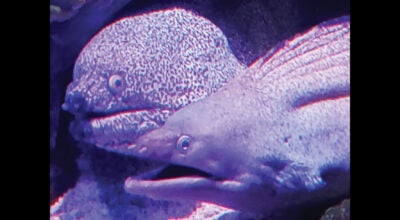A life-giving tether
Published 9:44 pm Tuesday, August 14, 2018
I bawled like a baby last May after I told the doctor “yes” and signed those forms. Yes, we knew she needed one. Yes, we knew it was time. But in my mind a feeding tube was a death knell, a mysterious end-of-life tether to all things diminishing.
Sometimes you’re wrong.
The path to my mother’s procedure included brain surgery and all the accompanying rehabilitation efforts. What it did not include, however, was adequate caloric intake. Despite our best cajoling, Mom wouldn’t eat. Sure, we could manage to slide a Boost down her throat one swallow and prod at a time, but it wasn’t enough. The speech pathologist tried tempting her with ice cream. I brought in contraband turnip green soup from Porches. My dad begged. The tipping point finally came about two weeks post op.
I was stretched out on the couch in our room at Methodist Rehab when a nurse arrived to do whatever nurses do to patients at midnight. Minutes later, I was awake enough to notice when she called another nurse to join her beside my mother. I overheard bits and pieces as they debated the numbers showing up on a weighing device connected to the bed.
“. . . came in at 123 . . .”
“ . . . 109 now . . .”
Thus began the trajectory that led us to a surgical suite where a kind lady in blue scrubs told us about adult food formulas and asked me if my mother vaped. (Negative.) Mom’s feeding tube, she said, would be the common, garden-variety type G-tube (gastrostomy tube). She also threw around acronyms like PEG tube, which the internet says is basically a long G-tube.
Less than an hour later, Mom had the latest abdominal accessory and a new lease on life.
Dad and I had a lot to learn about continuous feeding pumps and proper prepping, but the payoff was nothing short of miraculous. With the right nutritional intake, Mom made a major turnaround. She even started talking again. Her therapists were shocked.
When my brother called that weekend, he and Mom had a full-blown conversation. Before that, the discourse had simply been long, yawning syllables that went something like this: “Hellooooooooo, (long pause) Miiiiiiiiitch.”
“Wow!” my brother gushed after their extended call. “What’s happened? This is wonderful.”
I credited the wonder-working power of food and prayer, not necessarily in that order.
In time we went home, where a truck unloaded a month’s worth of Mom’s liquid meals.
We settled into a new normal (four timed feedings each day), but Dad was determined to get her eating again. He cooked oatmeal for breakfast and made her eat a few bites. I stocked their fridge with her favorite chili and delivered bedtime smoothies beefed up with protein. They made their round of restaurants. Over the weeks, Mom’s appetite increased to her pre-everything level which, admittedly, was never great, but it was life sustainable. The bolus feedings (pushed in by syringe rather than pump) were gradually replaced by a real meal here, a real meal there.
A crackerjack nurse named Renee had Dad weigh Mom each morning and chart what the scales said. Slowly the numbers rose, finally hitting and hovering at an acceptable 116. And then the big day dawned. Three months after getting her feeding tube, Mom — grinning ear to ear and talking 90 to nothing — left it behind in Dr. Peavy’s office. And never looked back.
Renee has been at the home health nursing bit for a while. She said she’s never had a patient who was able to have a feeding tube removed, and that’s why I wanted to share our story. Maybe there’s a caregiver out there signing forms and hearing death knells. Maybe there’s someone like us who needs to know feedings tubes can sometimes be a means to an end — an end other than the one we had always imagined they involved.
Kim Henderson is a freelance writer. Contact her at kimhenderson319@gmail.com.





